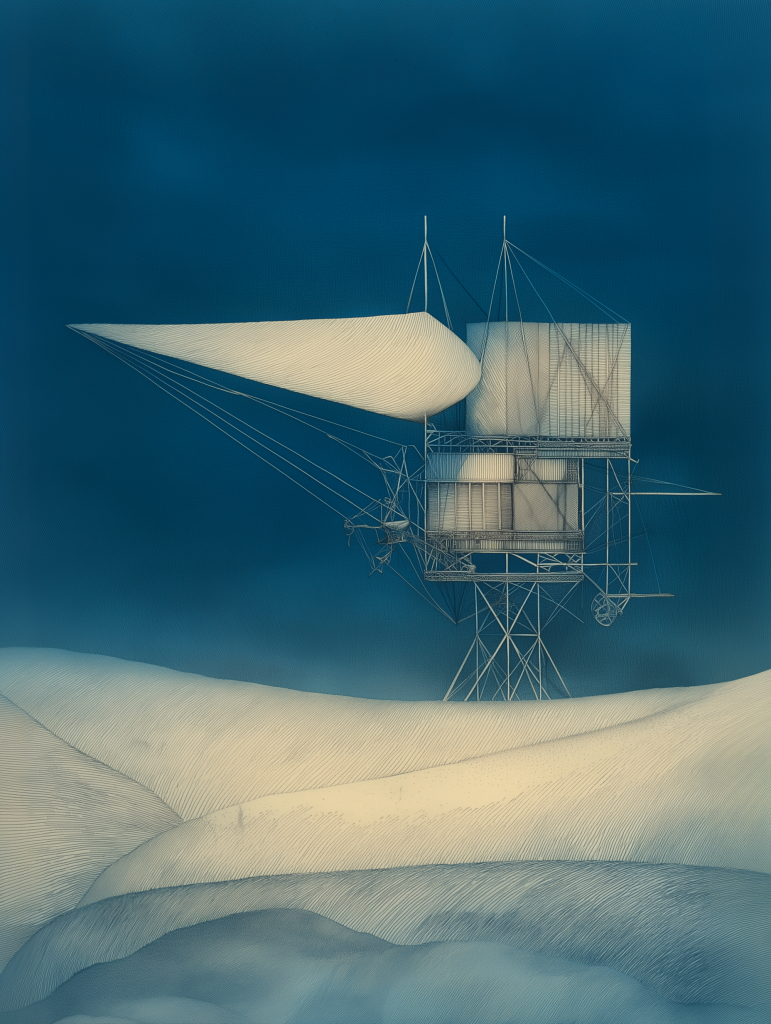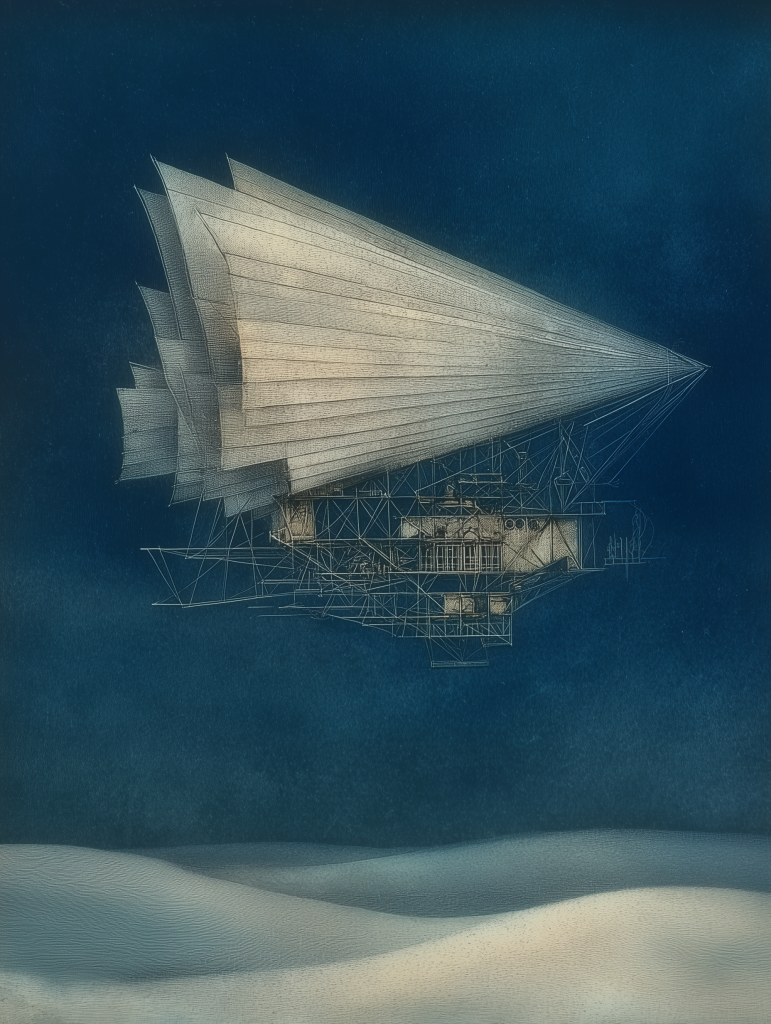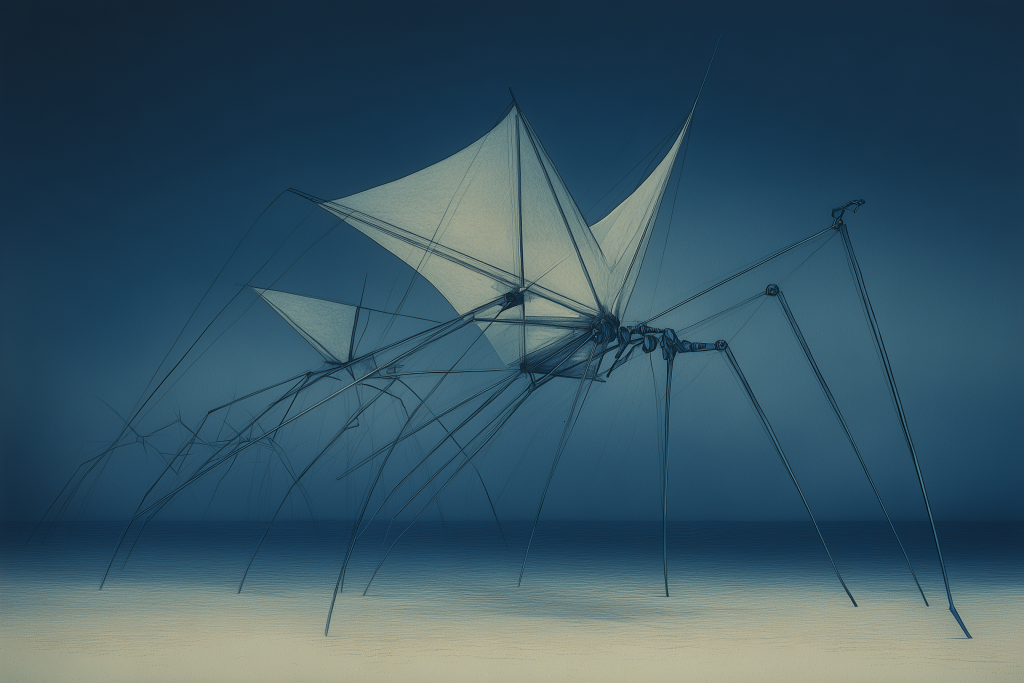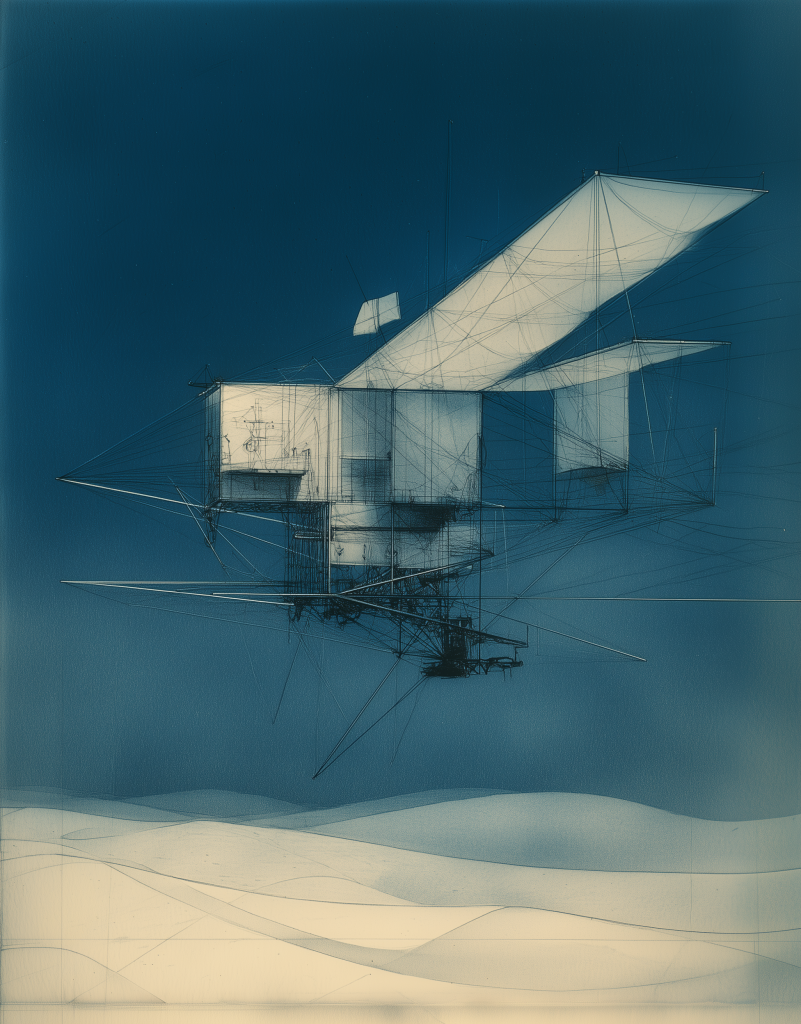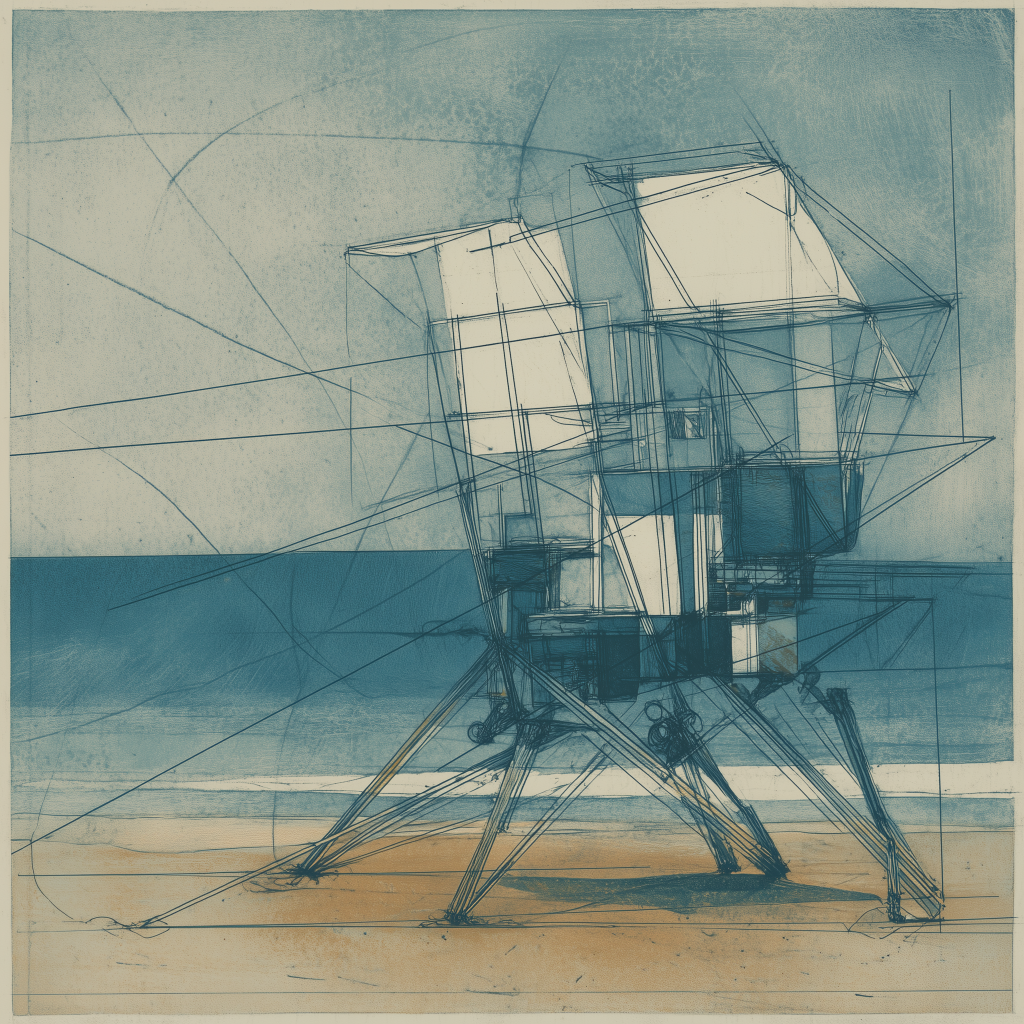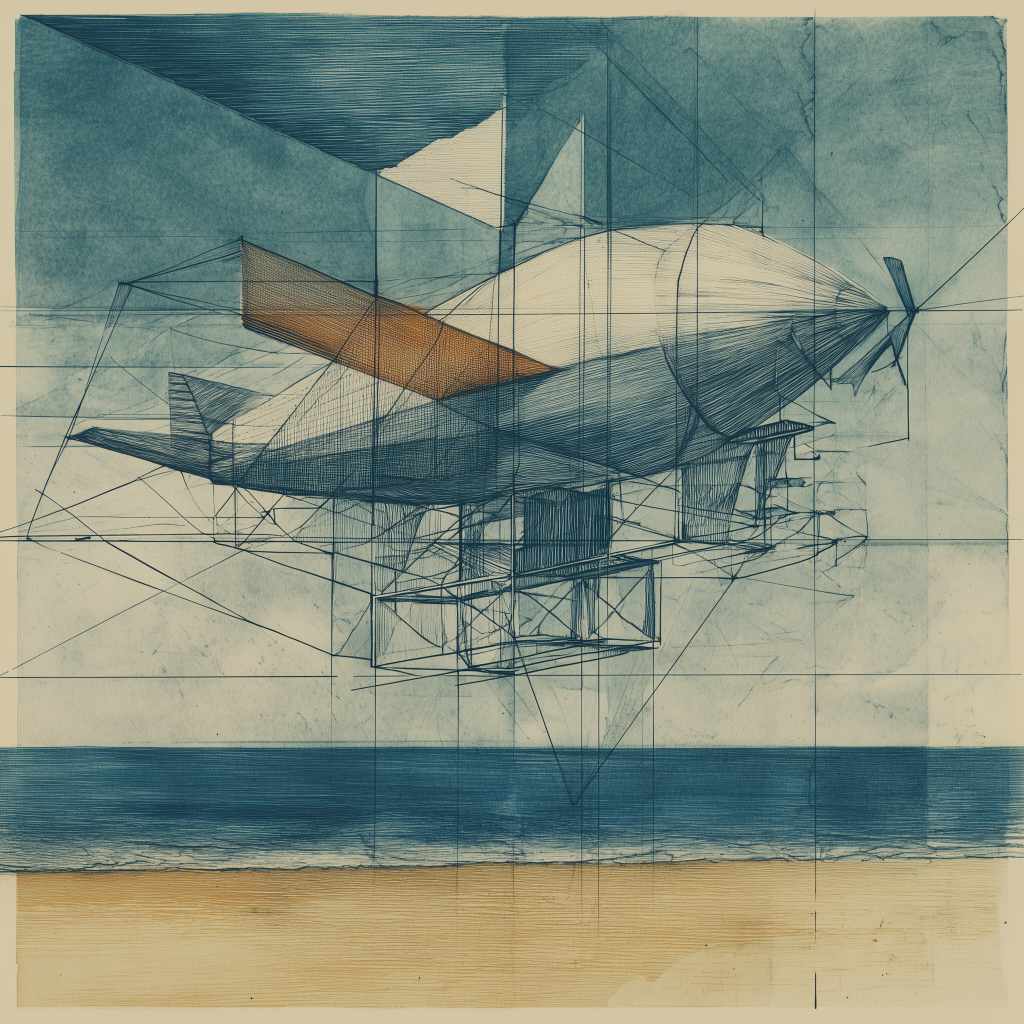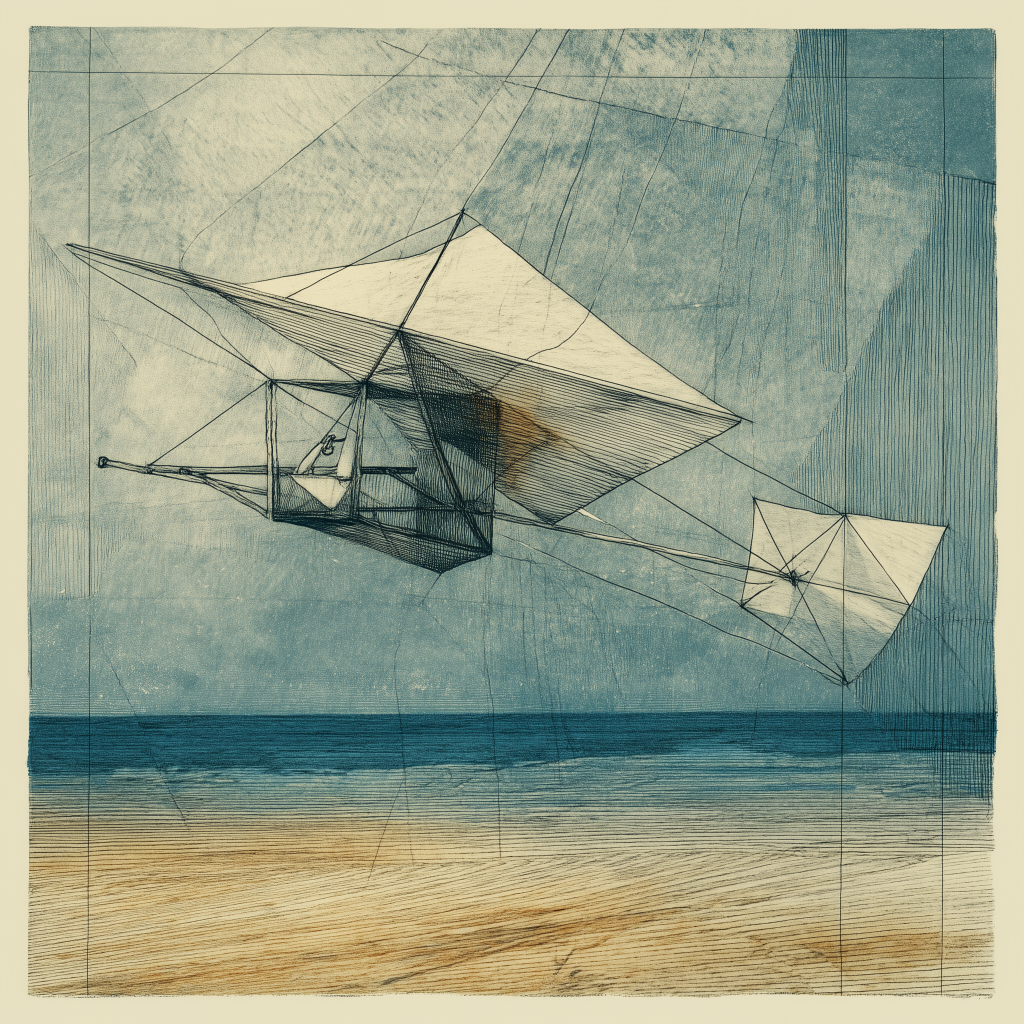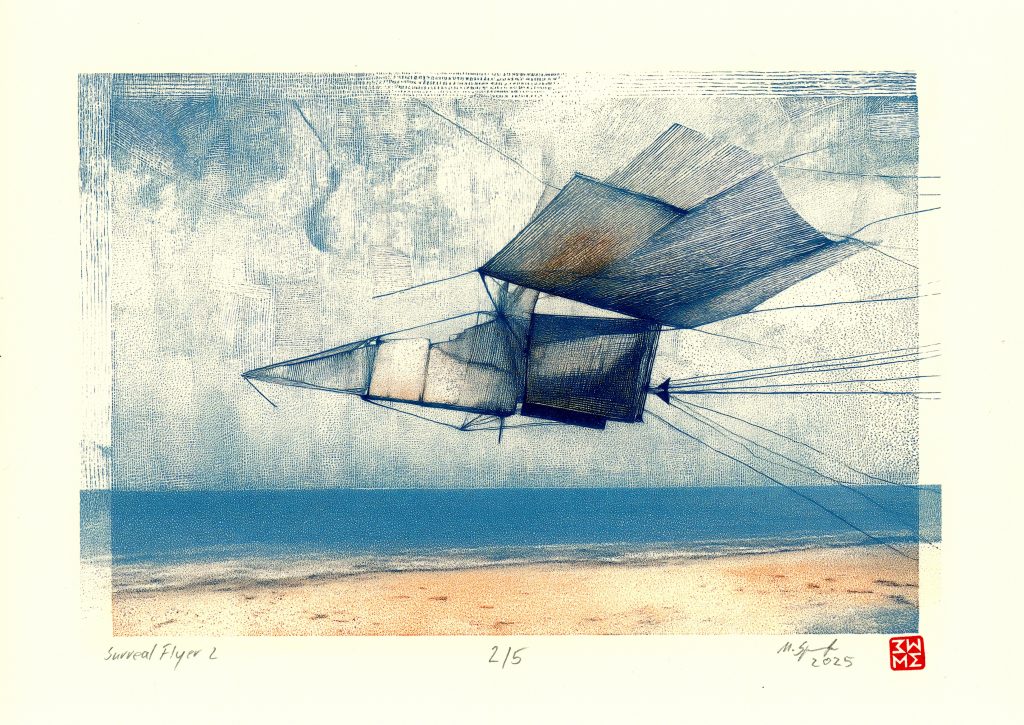
At the Beach of the Winds
An Artistic Approach
The image series At the Beach of the Winds does not reveal its meaning at first glance. Its effect unfolds slowly, with repeated viewing: a sense of lightness and inner calm emerges, setting itself apart from the familiar world we know. It is an artistic counter-design to a Western reality shaped by growth, consumption, and the constant depletion of resources.
The pictures are executed in the manner of colored drypoint etchings. Their muted tones create a quiet intensity, standing deliberately in opposition to the “brightly colored life” of Western consumer societies. What appears here is not a loud display of excess but a restrained, clear visual language that conveys balance and calm.
The series creates a vision of an island, a fictional place beyond our known world. The unusual physical conditions there—reduced gravity, floating houses, magnetic field disturbances and special winds—become metaphors in the images. They represent a lightness that sustains people’s lives. This lightness is not only physical, but also social: a life without the burden of competition, greed, and compulsion.
What if resources were used only according to actual need—without waste? What if society were based on solidarity? What if equality were a given, conflicts were resolved collectively, and coexistence were characterized by sincerity?
One could imagine a life that is simple but not poor: one in which creativity does not serve profit but flows into community projects—into the design of places of exchange and culture, into the development of technologies for renewable energies, into communal forms of living or processes that are ecologically and socially sustainable. Creations that do not accumulate possessions but serve the common good and enrich everyone’s everyday life.
The feeling of openness, lightness, and transparency that the images create allows viewers to sense that another life is possible—one based not on accumulation, but on relationships and mutual respect.
Thus the images are more than aesthetic compositions. They serve as symbols of a utopia: a society that redefines its values, respects its resources, lives in honesty, and directs innovation not toward the multiplication of possessions, but toward shared well-being.

